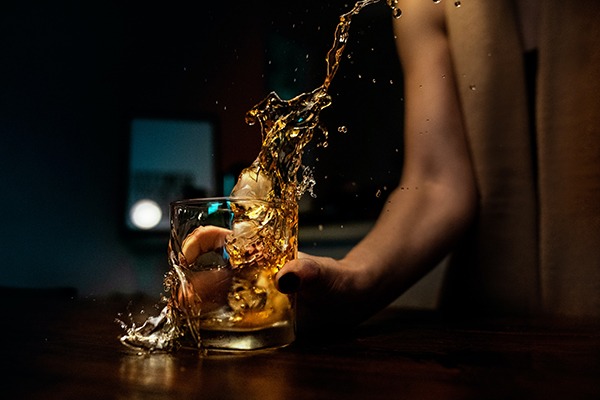Written by Emilyn Kowaleski
The save the date had arrived months ago, and now the elegant navy envelope peered at me with a mix of joy and anticipatory anxiety. As I plucked it from between student loan refinancing offers, the silver calligraphy glimmered a prefix to a person I no longer identify as – Ms. The hurt was quickly replaced by panic as I scanned to the bottom of the invitation. “Black Tie Attire” A framework where women wear gowns, men wear tuxes and non-binary people . . . don’t exist.
My good friend from high school was getting married in the California wine country north of the Bay Area suburb where we grew up and I never fit in. As teenagers, we were a set of strong minded overachievers dawning “well behaved women seldom make history” stickers on our binders. Our more futile rebellious edges drew us to our first swigs of cheap rum a friend’s older brother snuck us at fifteen. Now, she is a successful Harvard Business School graduate married to a man she deeply loves and I am a single, non-binary, bisexual multihypenate artist who celebrated my one year sober anniversary on the day of her wedding.
Well portrayed in advertisements by Christina Hendricks for Johnny Walker or Mila Kuniz for Jim Bean, she is a marketing strategy used to sell whiskey to women “like a power suit.” I now think of her as the night time version of the white “lean in” feminist, which proports that the key to liberating ourselves in marginalized gender is learning to play to the tune of the white male dominated culture.
In high school, I drank to grasp at a version of cool that was never my destiny. In college, I drank because it seemed like a way to be a person other people enjoyed. By my 20s, I sought to embody the trope of the mysterious, sexy, powerhouse “Whiskey Woman.” Well portrayed in advertisements by Christina Hendricks for Johnny Walker or Mila Kuniz for Jim Beam, she is a marketing strategy used to sell whiskey to women “like a power suit.” I now think of her as the moonlit version of the white “lean in” feminist, which proports that the key to liberating ourselves in marginalized gender is learning to play to the tune of the white male dominated culture. A culture where we too can make decisions for ourselves over a glass of scotch, or lubricate the birth of our “Great American novels” with a bottle of bourbon. I too craved glory for being a certified self-hating mess. The trap of the whiskey woman is that her liberation, like her whiskey, is served neat. This renders an authentically liberated self nearly impossible to find under her grasp.
The trap of the whiskey woman is that her liberation, like her whiskey, is served neat.
By the time I entered my 30s I was working in an arts leadership position by day, earning an MA in Women’s History by night, then lulling myself to sleep with a glass (or three) of as a way of soothing the gremlins that authored endless take down pieces of my every quality in my eardrums. By the time I graduated in May 2020, Covid had made drinking alone socially celebrated and I happily took advantage of that to avoid spending so much time alone with myself. When my latest in a string of short lived romantic relationships ended in July 2020, I calculated two choices: respond to the break up by getting trashed and validating the fear that I was innately unlovable – or try a new approach. So, I quit drinking and stumbled upon an adjacent recovery program that invited me to heal from my compulsive need for validation. Living for validation means that how people perceive you is the only perception that matters. That’s a challenging way to live for anyone, but especially when the gender people perceive you to be is inaccurate to who you are.
True to my style of self exploration it wasn’t until after I spent two years writing a thesis on the history of sex-segregated bathrooms that I realized I identify outside the gender binary. It also took me until 27 to recognize that I’m sexually attracted to people other than men. You see, I was so busy trying to get men to sexually desire me to realize I had sexual desire beyond them. When it came to my gender, I was too busy studying women, and trying on ways to be a woman to ask myself – am I one? Even after I started discovering the answer to be no, I still talked about myself as a woman. It was how people perceived me. Who was I to argue? It wasn’t until I quit drinking that I began healing the part of myself that needs other people to approve of me, and could begin to let others see me.
It wasn’t until I quit drinking that I began healing the part of myself that needs other people to approve of me, and could begin to let others see me.
My therapist advised me to dress to the wedding in what would bring me joy so I arrived rocking a thrifted black tuxedo jumpsuit, gold oxfords, and a bold red lip. I was not the only queer person, or non-drinker, there, but I was the only femme wearing pants. So, for a brief moment, I missed the whiskey woman. For years she’d been one smokey sip away from rescuing me from my discomfort with standing in my own skin. But the only one standing in the middle of a vineyard was me.
Me, who currently feels in drag in a dress. Me who cheers with ginger ale and suggests ice cream dates on Hinge. Me who disrupts otherwise joyful moments by offering a correction to “she” “ladies” “girls” or “cat mom” or swallows it in silence. Me who stands ready for people to not want to invite me places, date me, or work with me because I break two major social contracts by existing and that’s “no fun.” At the end of the day, all of this is an invitation to practice loving myself enough to feel that sting, but to allow none of it to confirm my worst fears about myself.
I get to come home to myself, every night, and tell myself “I love you for all that you are and all that you may discover yourself to be.” That is a messy and emotional process, but it does get me one step closer to truly feeling free.
Emilyn Kowaleski is a queer feminist writer, director, and facilitator working towards collective healing, transformation, and liberation. Much of their writing focuses on dismantling social order through explosive historical inquiries into paradigms of power. A theater-maker by training, Emilyn writes in a blend of disciplines including plays, performance pieces and poetry that have been presented at venues across New York City. Their essays and articles have appeared in publications such as Media Diversity Institute and the Re/Visionist. They currently write and collaborate with folks across the globe from their home in Philadelphia. www.EmilynKowaleski.com

